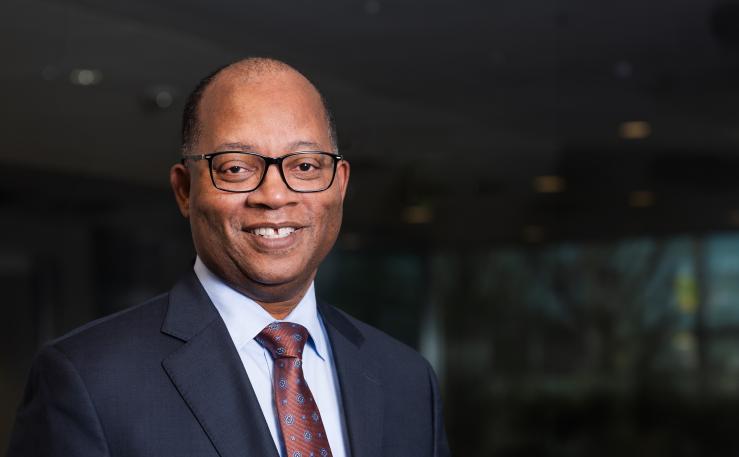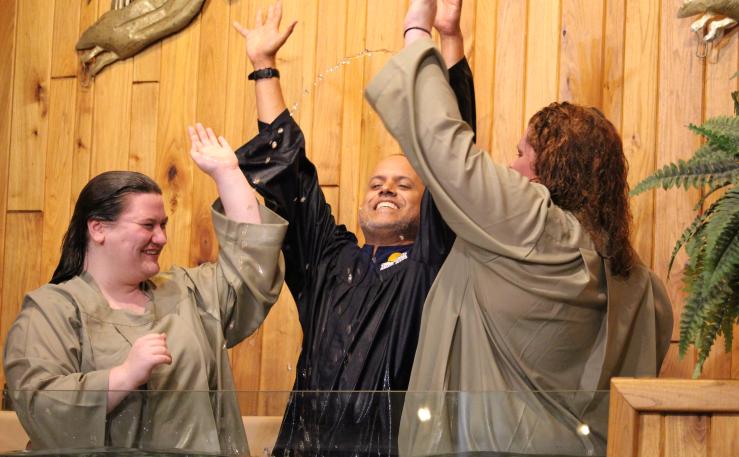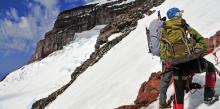Who We Are, How We Serve
The Columbia Union Conference coordinates the Seventh-day Adventist Church’s work in the Mid-Atlantic United States, where 150,000 members worship in 860 congregations. We provide administrative support to eight conferences; two healthcare networks; 81 early childhood, elementary and secondary schools; a liberal arts university; a health sciences college; a 49 community services centers; 8 camps; 5 book and health food stores and a radio station.
We Believe
God is love, power, and splendor—and God is a mystery. His ways are far beyond us, but He still reaches out to us. God is infinite yet intimate, three yet one,
all-knowing yet all-forgiving.
Story by Tim Allston
According to “American Congregations at the Beginning of the 21st Century,” a Duke University 2006-2007 National Congregations Study, the percent of regular adult participants younger than age 35 in the average congregation dropped from 25 to to 20 percent.
In his July 2008 Ministry magazine article, “Reaching Out: Making a Difference With Young Adults," A. Allan Martin, the teaching pastor of a young adult ministry at the Arlington church in Texas, cites Paul Richardson of the Center for Creative Ministry, with headquarters in College Place, Wash. Richardson reported that the median age for the Seventh-day Adventist community in North America, "including the un-baptized children in church families, is 58 … Among native-born white and black members, the median age is even higher."
The frightening implications of this figure are seen when that median age, 58, is compared to the median ages of the United States and Canada, respectively, which are 36 and 37!
Story by Kimberly Luste Maran and Beth Michaels
In the United States on a single night in January 2014, 578,424 people experienced homelessness—they were sleeping outside, or in an emergency shelter or transitional housing program.1 In 2014, 46.7 million people lived in poverty.2
The numbers are striking, but when the impact of extreme weather conditions on these particular populations are factored in, the number of people needing assistance can be staggering. Add to this people who are economically secure but have experienced an extreme weather event and are temporarily yet suddenly thrust out of their safe, stable environment.
Here are ways Seventh-day Adventist churches and members can, and are, helping:
Crafting a Cold Weather Refuge
Story by Elena Cornwell / Photos by Daniel Shanken, Andrew Rush and Joshua Roberts/AP Photos
Three members share how they represent the Lord to the world around them—all while they shine in divinely appointed career paths.
Terry Hess: Spicing Up Life
Hess’ goal was to be the vice president of his bank, One Valley Bank (now BB&T), before he was 30. He succeeded. In 1997 his uncle called to inform Hess it was time to buy his Virginia Honey Company, which he did later that year. Hess committed to give five cents of whatever sold to charity. Under his leadership, the company donated $1.5 million and grew four times. That was just the beginning of God’s path for Hess.
Editorial by William "Bill" Miller
It was a warm afternoon as we returned from an unsuccessful attempt to summit Mount Rainier (14,410 feet) in Washington State. The eight of us had sat at Camp Hazard (11,600 feet) for two days, the weather finally forcing us to return home.
On our descent, we made our way around the Wilson Glacier and crisscrossed the Nisqually Glacier, trying to avoid the many open crevasses, however, came to a crevasse we could not go around. We located a snow bridge to traverse over. After testing the bridge, we decided it was safe to cross. When it was my turn to go over, the snow bridge collapsed. I fell 14 feet and became wedged in the crevasse, upside down.








